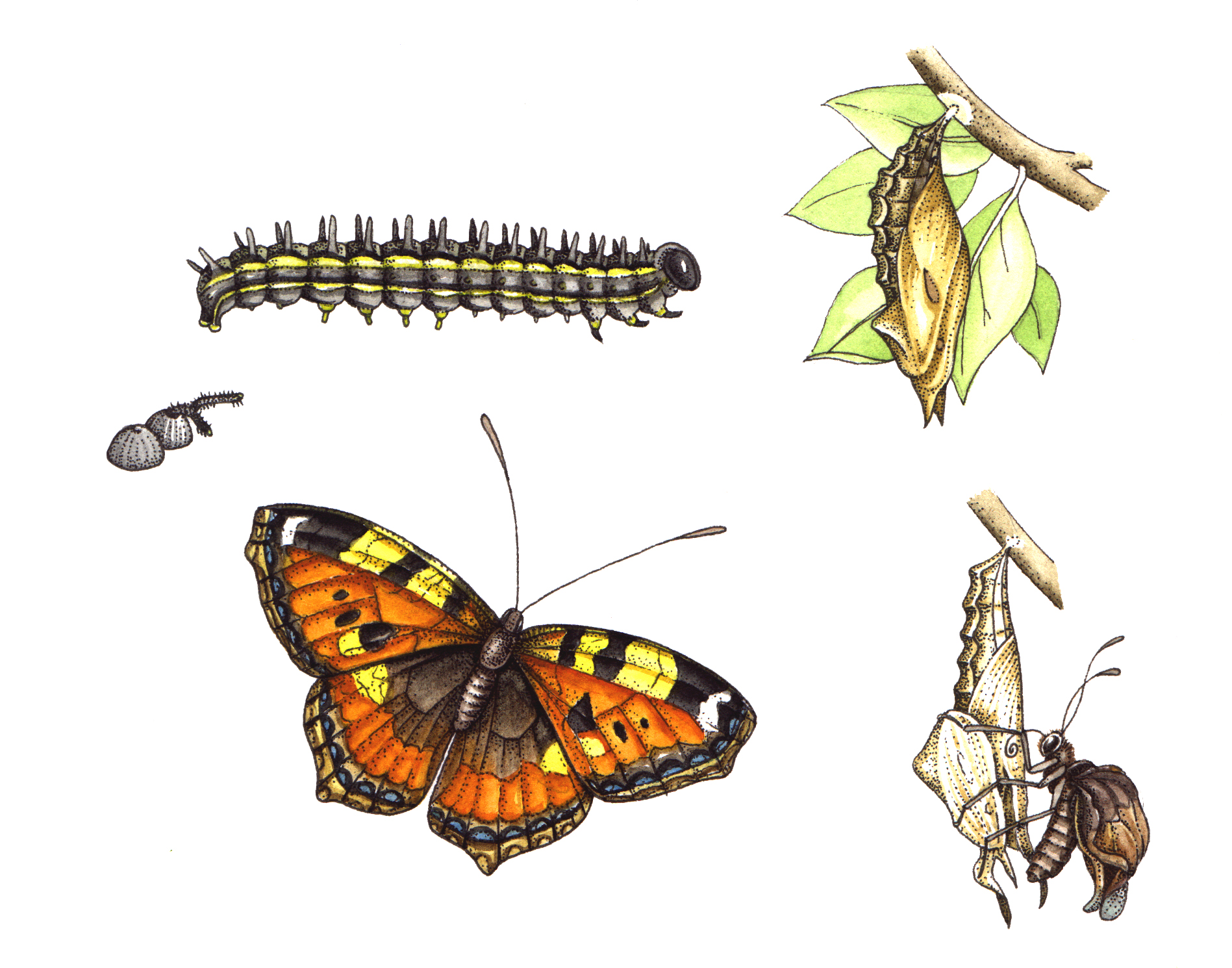
This sort of data can be useful in seeing concentrations of a particular species over the continent as well as revealing possible migratory patterns over a species given lifespan. The caterpillars feed on common nettle.
Small tortoiseshell butterfly lifecycle Egg laying time.
What is the lifespan of a tortoiseshell butterfly. Small tortoiseshell butterfly lifecycle Egg laying time. The small tortoiseshell butterfly who emerges from hibernation lays its eggs in May and this brood. Small tortoiseshell butterfly caterpillars.
The larva of small tortoiseshell butterflies will emerge in May or July. Approximately 10 days Host plants. Lilac thistles goldenrod Adult diet.
Nectar of flowers as well as dung plant sap and rotting fruit. The Small Tortoiseshell Butterfly caterpillar Aglais urticae The caterpillars feed gregariously on nettle within a loose web until dispersing when nearly fully grown after about 21 days. The brood are generally black at first but show a variation in colour as they grow with some developing pale yellow lines down their sides and dorsal area while others remain mainly black.
Widespread throughout Britain and Ireland commonly found in gardens. The Small Tortoiseshell is among the most well-known butterflies in Britain and Ireland. The striking and attractive patterning and its appearance at almost any time of the year in urban areas have made it a familiar species.
It is one of the first butterflies to be seen in spring and in the autumn it often visits garden. The Small Tortoiseshell is one of our most-familiar butterflies appearing in gardens throughout the British Isles. Unfortunately this butterfly has suffered a worrying decline especially in the south over the last few years.
This butterfly has always fluctuated in numbers but the cause of a recent decline is not yet known although various theories have been proposed. One is the increasing presence of a particular. Caterpillars hatch after about 10 days and spin a dense web over the plants growing tip.
The caterpillars live communally for most of their lives dispersing to pupate. Adults often hibernate in houses outbuildings and sheds. Caterpillars are bristly and black with.
The small tortoiseshell is a medium-sized pretty butterfly that is common in gardens where it feeds on buddleia and other flowers. It is on the wing throughout the year having two or three broods and overwintering as an adult. The caterpillars feed on common nettle.
The map below showcases in blue the states and territories of North America where the Compton Tortoiseshell Butterfly may be found but is not limited to. This sort of data can be useful in seeing concentrations of a particular species over the continent as well as revealing possible migratory patterns over a species given lifespan. Some species are naturally confined by environment weather mating.
The life span of tortoiseshell cats is about 10-15 years. However the factors also depend on their breed and their upbringing too. There are also such tortoiseshell cats that have even lived for 20 years.
During their short lifetime they undergo a complete change or metamorphosis. Each one begins life as an egg hatches into a caterpillar pupates into a chrysalis and then emerges as an adult. Butterflies need warmth to be active and fly and they need to drink nectar for energy.
Provide both and youll have a butterfly haven. Try to plant plenty of different nectar plants that flower throughout spring summer. The map below showcases in blue the states and territories of North America where the California Tortoiseshell Butterfly may be found but is not limited to.
This sort of data can be useful in seeing concentrations of a particular species over the continent as well as revealing possible migratory patterns over a species given lifespan. Some species are naturally confined by environment weather mating. Tortoiseshell Cat Lifespan Generally felines have an average lifespan of up to 14 years.
However just like health concerns a tortoiseshell cat lifespan depends on its breed and upbringing. Certain breeds can live beyond 20 years just like the American Shorthair and the Siamese. This butterfly whose numbers were always known to fluctuate is generally considered to be extinct in the British Isles with any sightings considered to be migrants from the continent or accidental or deliberate releases of captive-bred stock.
Several causes of its decline have been suggested - including climate change parasitism and the effect of Dutch Elm disease on one of its primary foodplants. The hope of course is that this butterfly. Lifespan of adults.
Probably lives for about one year. Mainly the leaves of plants belonging to the violet family Adult diet. Also known to feed on dung.
The over-wintering generation is long-lived and individuals can survive 10 months. The impressive life-span allows the female Small Tortoiseshell the chance to be selective. Most female butterflies accept the first male encountered.
These females lack the luxury of an extended life to test male powers of endurance. To ward off predators this butterfly will rub its wings together that sounds like hissing. The females can lay up to 500 eggs.
The larva or the caterpillar of the peacock butterfly grows rapidly because of its huge appetite. When its time to rest the peacock butterfly closes its wings. The peacock butterfly can live up to 11 months which is a long time in the butterfly world.
The average lifespan of the butterfly is around two weeks. Some live a little longer depending on their environment. Some live a little longer depending on.
The Painted Lady is the most wide spread butterfly species in the world occurring on all continents except South America and Antarctica. When a butterfly first emerges from its Chrysalis it has tiny shriveled wings and cant fly. The butterfly must immediately pump body fluid through its wing veins to expand them.
Once its wings reach full-size the butterfly must rest for a few hours to allow its body.